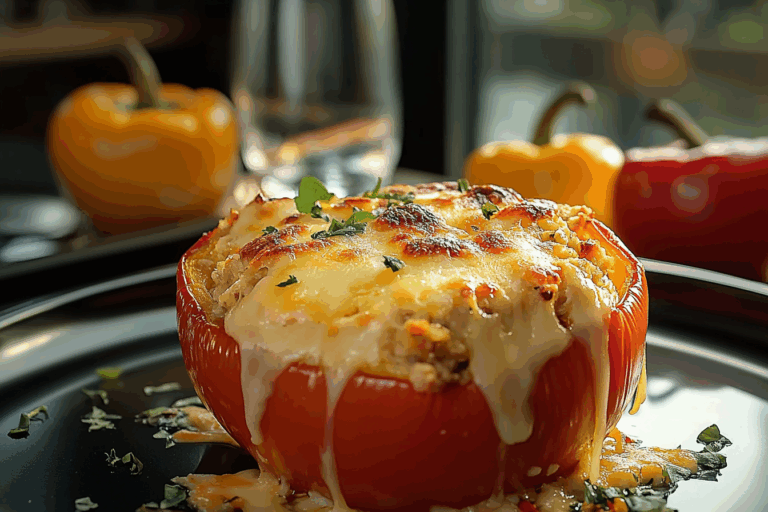Caputo Neapolitan Pizza – Metodo Diretto
Hey there, pizza purist! Get ready to discover a recipe that’s about to become a staple in your kitchen and a star on your dinner table. I’m talking about a dough that whispers tradition, shouts flavor, and effortlessly brings smiles all around. This Caputo Neapolitan Pizza (Metodo Diretto) isn’t just a base; it’s a canvas for culinary artistry, a joyous centerpiece for gatherings, and frankly, a secret weapon in your culinary arsenal. Trust me, you’re going to absolutely adore this one it’s a game-changer!
Why You’ll Love This Caputo Neapolitan Pizza (Metodo Direto)
This recipe isn’t just about the ingredients; it’s about creating moments. Whether you’re baking for a casual family pizza night, hosting a wood-fired oven party with friends, or simply indulging in some comforting flavors for yourself, this dough is versatile enough to fit the occasion. Here’s why it’s a favorite:
Authentic Neapolitan Flavor
By using Caputo 00 flour and the direct method, you’re embracing the traditional way Neapolitan pizza dough is made. This results in a light, airy, and incredibly flavorful crust with that characteristic “leopard-spotted” char.
Simple Ingredients
Just four core ingredients: flour, water, salt, and yeast. The beauty lies in their quality and the technique, not a long list of fancy items.
Versatile Base
While designed for classic Neapolitan toppings like San Marzano tomatoes, fresh mozzarella, and basil, this dough provides a superb foundation for any high-quality pizza toppings you desire.
Customizable Fermentation
While the direct method is straightforward, you can adjust the fermentation time (from shorter room temperature proofs to longer cold proofs) to fit your schedule and develop more complex flavors.
Crowd-Pleasing
There’s something inherently communal and satisfying about homemade pizza, and Neapolitan pizza especially evokes joy. This dough is a guaranteed hit, leaving everyone impressed with its authentic taste and texture.
What is “Metodo Diretto” (Direct Method)?
The “direct method” for pizza dough means all ingredients (flour, water, salt, yeast) are combined at once, without a pre-ferment like a biga or poolish. It’s the most common and straightforward way to make Neapolitan pizza dough. While it might seem simpler, achieving the signature airy crumb and flavor still requires attention to detail with ingredients and fermentation.
Ingredients
Here’s the magic of this Neapolitan pizza dough—it’s made with just a few pantry staples, but the result is so much more than the sum of its parts. Let’s break it down:
Caputo “Pizzeria” Tipo 00 Flour
This is the gold standard for Neapolitan pizza. Its specific protein content and milling process (Tipo 00 is finely milled) create a dough with excellent elasticity and extensibility, crucial for that characteristic airy, light, and chewy crust (cornicione). Look for the red bag, often labeled “Caputo Pizzeria” or “Caputo Cuoco.”
Water
Hydration is key. The water should be cool to room temperature, around 16-21°C (60-70°F), to control the yeast activity and allow for proper gluten development during kneading.
Fine Sea Salt
Essential for flavor, seasoning the dough, and regulating yeast fermentation. Don’t use iodized table salt, as it can affect yeast activity and flavor.
Fresh Brewer’s Yeast (or Instant Dry Yeast)
Fresh yeast is traditional and often preferred for its subtle flavor, but instant dry yeast can be used effectively. The amount of yeast will vary greatly depending on your desired fermentation time and ambient temperature.
(Note: the full ingredients list, including measurements, is provided in the recipe card directly below.)

Instructions
Let’s dive into the steps to create this flavorful masterpiece:
Day 1: Mixing the Dough (Evening)
- Prepare your ingredients: Measure out all your ingredients precisely using a kitchen scale. Ensure your water is cool to room temperature (16-21°C / 60-70°F).
- Dissolve Salt: In a large mixing bowl (or stand mixer bowl), dissolve the fine sea salt completely in the water. This is important to ensure the salt doesn’t inhibit the yeast’s activity initially.
- Add Yeast and Flour: Add the fresh yeast (or instant dry yeast) to the salty water and stir briefly to dissolve. Then, gradually add the Caputo 00 flour to the mixture, stirring with a sturdy spoon or by hand until a shaggy dough forms. If using a stand mixer with a dough hook, start on low speed.
- Knead the Dough:
- By Hand: Turn the shaggy dough out onto a clean, lightly floured surface. Knead for about 10-15 minutes. The dough will be sticky at first, but as you knead, it will become smoother, more elastic, and less sticky. Use a scraping motion to fold the dough over itself, pushing down with the heel of your hand.
- Stand Mixer: Increase the speed to medium-low and knead for about 8-10 minutes, or until the dough is smooth, elastic, and pulls away from the sides of the bowl. Perform the “windowpane test” – gently stretch a small piece of dough; if it stretches thin enough to see light through it without tearing, the gluten is well-developed.
- Bulk Fermentation (First Rise – Room Temperature): Form the dough into a ball and place it in a lightly oiled large container (or the mixing bowl). Cover tightly with plastic wrap or a lid. Let it rest at room temperature (ideally 20-22°C / 68-72°F) for 2 hours. This initial rest helps the gluten relax and fermentation begin.
Day 1/2: Cold Fermentation (Overnight)
- Transfer to Refrigerator: After the 2-hour room temperature rest, transfer the covered dough container to the refrigerator (around 4°C / 39°F) for 18-24 hours. This slow, cold fermentation develops deeper flavors and improves digestibility.
Day 2: Balling and Second Rise (Day of Baking)
- Remove and Rest Dough: About 4-6 hours before you plan to bake, remove the dough from the refrigerator.
- Divide and Ball: Gently turn the dough out onto a lightly floured or un-floured surface. Divide the dough into individual balls, weighing approximately 250-280g each (for a 12-inch pizza). Form each piece into a tight, round ball. There are various techniques for this, but the goal is to create surface tension.
- Second Rise (Proofing – Room Temperature): Place the dough balls into individual lightly oiled containers, or a well-floured proofing box/tray, ensuring they have enough space to expand without touching. Cover loosely with plastic wrap or a lid. Let them rise at room temperature for 4-6 hours, or until they have significantly increased in size, look puffy, and are very soft and airy to the touch. You should see some small bubbles on the surface.
Day 2: Shaping and Baking
- Preheat Your Oven: This is crucial for Neapolitan pizza. If you have a dedicated pizza oven (wood-fired, gas, or electric) that reaches 400-500°C (750-930°F), preheat it to its maximum temperature, allowing at least 30-60 minutes for the stone/deck to heat up thoroughly. For a home oven, preheat your oven and a pizza stone or steel to its highest possible temperature (usually 250-260°C / 480-500°F) for at least 1 hour.
- Prepare Your Work Surface: Lightly flour your work surface with a fine semolina (semola rimacinata) or a bit of your 00 flour. Avoid using too much flour, as it can burn on the hot stone.
- Shape the Pizza: Take one dough ball. Gently press it from the center outwards with your fingertips, pushing the air towards the rim to form the “cornicione” (crust). Rotate the dough as you go. Avoid pressing the edges. Once a disk forms, gently stretch it further by hand, allowing gravity to help. Aim for a diameter of about 10-12 inches.
- Top the Pizza: Carefully transfer the shaped dough to a lightly floured pizza peel. Quickly add your chosen toppings. For authentic Neapolitan, keep it simple: crushed San Marzano tomatoes, fresh mozzarella (fior di latte, drained well), a few basil leaves, and a drizzle of extra virgin olive oil.
- Bake the Pizza:
- High-Temperature Pizza Oven: Slide the pizza onto the preheated stone/deck. Bake for 60-90 seconds, rotating once halfway through, until the crust is beautifully puffed, charred in spots (“leopard-spotted”), and the cheese is melted and bubbly.
- Home Oven: Slide the pizza onto the preheated pizza stone/steel. Bake for 5-8 minutes (or longer, depending on your oven), rotating halfway through, until the crust is golden brown and the cheese is melted.
- Serve and Enjoy: Remove the pizza with the peel. Slice and serve immediately. Enjoy your authentic Neapolitan pizza!
Notes:
- Hydration: This recipe aims for around 55-60% hydration, which is typical for classic Neapolitan pizza dough.
- Yeast amount: The yeast amount is a guideline. If your room is warmer, use slightly less yeast. If doing a longer cold fermentation, reduce the yeast.
- Yield: This recipe usually makes 3-4 individual pizzas, depending on your desired size.
Preparation Time
- Hands-on Prep: 20-30 minutes (mixing and kneading, then balling and shaping)
- Bulk Fermentation (Room Temperature): 2 hours
- Cold Fermentation (Refrigerator): 18-24 hours
- Second Rise (Room Temperature): 4-6 hours
- Bake Time: 1-2 minutes (high-temp oven) or 5-8 minutes (home oven)
- Total Elapsed Time: Approximately 24-32 hours (most of which is hands-off fermentation)
How to Serve This Caputo Neapolitan Pizza
This pizza is a meal in itself! Serve it hot, straight from the oven. For a true Neapolitan experience, keep toppings minimal and high-quality. A simple Margherita (San Marzano tomatoes, fresh mozzarella, basil, olive oil) or a Marinara (tomato, garlic, oregano, olive oil) are classics. You can also offer a small side of fresh arugula salad dressed lightly with olive oil and balsamic.
Additional Tips
- Listen to your dough: Dough consistency and rise times can vary based on ambient temperature, humidity, and even your specific flour batch. Learn to feel the dough; it should be elastic and soft but not overly sticky.
- Don’t over-flour: When shaping, use minimal flour on your work surface to avoid drying out the dough and to prevent excess flour from burning on your hot oven stone.
- Practice makes perfect: Shaping the dough takes practice. Don’t worry if your first few aren’t perfectly round. The taste will still be amazing!
- Freshness of Yeast: Ensure your fresh yeast is active. If using instant dry yeast, check its expiration date.
- High Heat is Key: The super high temperature is what gives Neapolitan pizza its signature puffy, airy, and slightly charred crust, cooking rapidly and locking in moisture. If you don’t have a high-temp pizza oven, your home oven’s highest setting with a pizza stone/steel will get you close.
FAQ’s
- What’s the difference between “Tipo 00” flour and all-purpose flour?
Tipo 00 flour is very finely milled and has a specific protein content (typically 11-12.5% for “Pizzeria” or “Chef’s” blends) that allows for excellent elasticity and extensibility, crucial for the thin, airy Neapolitan crust. All-purpose flour generally has a higher protein content and different milling characteristics, making it less ideal for the delicate structure of Neapolitan pizza. - Can I use bread flour instead of Tipo 00?
While you can make pizza with bread flour, it will result in a chewier, denser crust due to its higher protein content. It won’t have the same light, airy texture as a true Neapolitan pizza made with Tipo 00. - Why cold fermentation?
Cold fermentation slows down the yeast activity significantly, allowing for a longer rise. This longer fermentation time develops more complex flavors in the dough and improves its digestibility, resulting in a more flavorful and tender crust. - My dough is too sticky/too stiff. What did I do wrong?
This often comes down to hydration. Humidity, specific flour absorption, and ambient temperature can affect the dough’s consistency. If it’s too sticky, add a tiny bit more flour. If it’s too stiff, add a tiny bit more water, a teaspoon at a time, until the desired consistency is reached. - How do I know if my dough is properly proofed?
It should be visibly puffy, soft, and airy. When you gently poke it with a floured finger, the indentation should spring back slowly, but not completely. If it springs back too quickly, it needs more time. If it collapses, it’s over-proofed. - What are San Marzano tomatoes and why are they recommended?
San Marzano tomatoes are a specific variety of plum tomatoes grown in the Agro Sarnese-Nocerino region of Italy. They are known for their sweet, balanced flavor, lower acidity, and fewer seeds, making them ideal for simple pizza sauce. - Can I make this dough without a stand mixer?
Absolutely! Hand kneading is the traditional method and can be very therapeutic. It just requires a bit more effort and time. - How do I store leftover dough balls?
If you have extra dough balls, they can often be kept in the refrigerator for another 1-2 days, although they might become more difficult to stretch as they continue to ferment. - What if my home oven doesn’t get hot enough?
While a dedicated pizza oven is ideal, a home oven with a pizza stone or steel preheated for at least an hour at its highest setting can still yield excellent results. Place the stone on the highest rack to get closer to the broiler element, which can be turned on for the last minute of baking for extra char. - Can I use a pizza screen?
For authentic Neapolitan, a pizza screen is not typically used as it prevents direct contact with the hot stone, which is crucial for the rapid, high-heat bake and crispy bottom.
Conclusion
There you have it—your ticket to a truly delightful pizza experience that’s as traditional as it is satisfying. This Caputo Neapolitan Pizza (Metodo Diretto) is more than just a recipe; it’s a canvas for your culinary creativity, a journey into the art of pizza making, and a guaranteed crowd-pleaser that will have everyone asking for seconds. So go on, gather your ingredients, fire up that oven, and get ready to create some delicious memories. Happy baking, my friend, and enjoy every comforting bite!
Print
Caputo Neapolitan Pizza – Metodo Diretto
- Prep Time: 20 minutes
- Cook Time: 60-90 seconds per pizza
- Total Time: 24 hours 30 minutes (includes fermentation)
- Yield: 4 (250g-270g) pizzas (approx. 12-inch) 1x
- Category: Main Course, Bread
- Method: Baking (High-Heat Pizza Oven), Yeast Dough
- Cuisine: Italian (Neapolitan)
- Diet: Vegetarian
Description
A traditional, straightforward ‘direct method’ recipe for authentic Neapolitan pizza dough, optimized for high-heat pizza ovens. This recipe uses classic Caputo ’00’ Pizzeria flour and a cold fermentation process to develop a light, airy, and flavorful crust (cornicione) with minimal effort on the day of baking.
Ingredients
- 500g (approx. 4 cups) Caputo ’00’ Pizzeria Flour (Blue Bag)
- 310g – 325g (approx. 1 1/3 to 1 1/2 cups) cold water
- 15g (1 tablespoon) fine sea salt
- 0.5g (about 1/8 teaspoon or a tiny pinch) instant dry yeast
- Optional toppings: San Marzano tomato sauce, fresh mozzarella (fior di latte or buffalo mozzarella), fresh basil, extra virgin olive oil
Instructions
- Mix the Dough: In a large bowl, combine the water and salt, stirring until the salt is dissolved. Add the instant dry yeast and stir briefly. Gradually add the Caputo ’00’ Pizzeria flour to the liquid, mixing with one hand or a wooden spoon until all the flour is incorporated and a shaggy dough forms. Transfer the dough to a lightly floured surface. Knead by hand for about 10-15 minutes (or 8-10 minutes in a stand mixer on low speed) until the dough is smooth, elastic, and no longer sticky.
- Bulk Fermentation (First Rise): Form the dough into a smooth ball. Lightly oil a clean bowl or an airtight container. Place the dough ball in the bowl, turning it once to coat. Cover the bowl tightly with plastic wrap or a lid. Let the dough rest at room temperature (around 20-22°C / 68-72°F) for 1-2 hours.
- Cold Fermentation (Second Rise / Maturation): After the initial room temperature rise, place the covered dough in the refrigerator (around 4°C / 40°F) for 22-23 hours. This slow, cold fermentation develops complex flavors.
- Ball Fermentation (Room Temperature Proofing): About 3-5 hours before you plan to bake, remove the dough from the refrigerator. Gently divide the dough into 4 equal pieces (approx. 250-270g each). Form each piece into a tight, smooth ball. Place the dough balls in individual dough boxes or on a lightly floured tray, ensuring they have space to expand. Cover them loosely with plastic wrap or a damp cloth. Let them rest at room temperature (around 20-24°C / 68-75°F) for 3-5 hours until puffy and easy to stretch.
- Preheat Oven: Preheat your high-heat pizza oven (wood-fired, gas, or electric capable of 450°C/850°F+) to its maximum temperature for at least 30-60 minutes, or according to manufacturer’s instructions. A preheated pizza stone or steel is essential.
- Stretch and Bake: Lightly dust your work surface and dough ball with a very small amount of flour. Gently press the center of a dough ball, pushing the air towards the edges to create the ‘cornicione’. Work from the center outwards, carefully stretching the dough into a 10-12 inch circle. Quickly add your desired Neapolitan toppings. Transfer the pizza to a lightly floured pizza peel and launch it into the preheated oven. Bake for 60-90 seconds, rotating the pizza every 20-30 seconds.
- Serve: Slice and serve immediately.
Notes
- **Flour Type:** Caputo ’00’ Pizzeria Flour (blue bag) is specifically designed for Neapolitan pizza, offering the right balance of elasticity and extensibility.
- **Yeast Amount:** The yeast amount is very small for a long, cold fermentation. Adjust slightly based on your ambient temperature and desired total fermentation time. Less yeast for longer fermentation.
- **Dough Consistency:** The dough will be hydrated and might feel slightly sticky but should become smooth and manageable after kneading.
- **Dough Temperature:** Aim for a final dough temperature of 22-26°C (73-79°F) after mixing. Adjust water temperature accordingly.
- **High Heat Oven:** This recipe is optimized for very high-temperature pizza ovens (450°C/850°F+). Standard home ovens may not achieve the same results without a pizza stone/steel and proper preheating.
- **No Rolling Pin:** Avoid using a rolling pin, as it pushes out the air bubbles essential for the fluffy ‘cornicione’.
- **Authenticity:** This recipe follows the traditional direct method for Neapolitan pizza dough, which typically does not include oil or sugar in the dough itself.
Nutrition
- Serving Size: 1 pizza (dough only, without toppings)
- Calories: 350-400 (dough only)
- Sugar: 0g
- Sodium: 800-950mg
- Fat: 2-3g
- Saturated Fat: 0.5g
- Unsaturated Fat: N/A
- Trans Fat: 0g
- Carbohydrates: 70-80g
- Fiber: 2-3g
- Protein: 10-12g
- Cholesterol: 0mg
Keywords: Caputo, Neapolitan Pizza, Pizza Dough, Metodo Direto, Direct Method, ’00’ Flour, High Hydration, Cold Fermentation, Authentic Pizza







